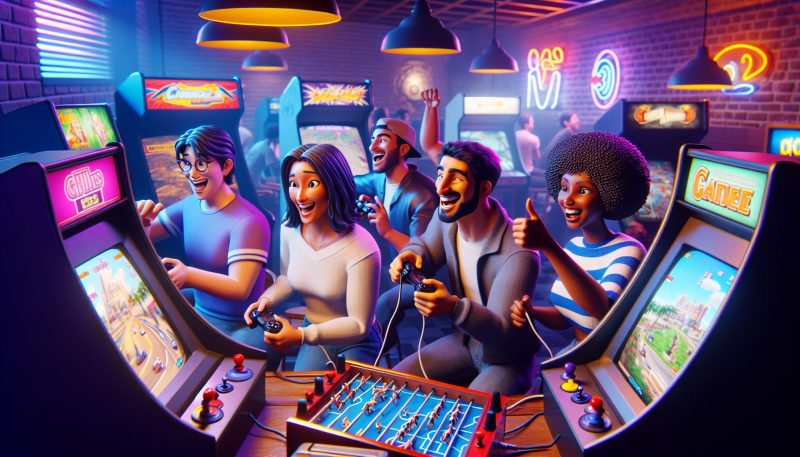Share this article
![]()
According to DappRadar’s “State of the Dapp Industry, Q1 2024” report, blockchain gaming dominated the first quarter, accounting for 30% of all on-chain activity during the period. The report highlights that an average of 2.1 million wallets were active each day during the first quarter.
This dominance of blockchain gaming activity could mean that analysts’ expectations for entertainment-focused Web3 games this cycle are being met. MetalCore is a new title, a blockchain shooter focused on fun gameplay, and is enjoying success in its second closed beta test.
“(The number of players) is actually a lot higher than we expected. We planned for hundreds, maybe 1,000 players. We have around 9,000 players and around 1,500-2,000 daily active users. And at any given time, we have 300 to 400 concurrent users. This is a really good thing for a game that isn’t available for free. You still have to sign up for the waiting list and get a key,” said Dan Nikolaides, CTO. metal core.
MetalCore’s second closed beta test ends May 16 after a two-week period primarily used to test the game’s economy and identify bugs, Nikolaides added. These testing periods make it harder to retain players because the game is running unfinished. That’s why the MetalCore team is amazed at the number of players who devote up to 50 hours a week to the game.
However, making blockchain games fun is not an easy task. Especially since most teams developing new Web3 titles come from the traditional gaming industry and have to adapt to new standards.
“The Web3 industry is still in its infancy, so it’s hard to know what’s right. And this leads to more direction changes than in Web2. Changing direction from a business perspective is generally not something you need to do in Web2. It’s about thinking. Well, is this going to be a premium game, is it going to be a free game, or is it going to be sold in bundles, or whatever? Whatever your business plan, you don’t need to change your entire development process.”
But with Web3, there are more factors to consider, including choosing a blockchain to distribute digital assets and deciding whether your game will have tokens. MetalCore’s CTO said this has a huge impact on the technology stack used and what teams can do with digital assets.
“Can we upgrade them? Will we have attributes that can be upgraded cheaply and allow players to level up? Or will it cost too much? It’s the simplest thing. From a business perspective, you also have to ask when to launch from a market perspective. When is a good time to launch a token? Who should we collaborate with? These are all very, very difficult decisions that we have to make on top of just making the game, and there’s definitely been a learning curve for us to figure this all out.”
scratching ideas
MetalCore is a multiplayer shooter reminiscent of popular titles such as Titanfall and Destiny. Players can take on missions, use a variety of combat vehicles, and fight alien monsters. Nikolaides shared that the decision to create a multiplayer online game was related to “the company’s DNA,” but started outside of Web3.
“We actually started doing this with VR games. So I created a VR game called World of Mechs for Quest 2 (VR goggles). And it was really fun. Our founders have a long history in mechanical game development. Once you do that, you have a really good foundation for some fun mech combat. And we thought, ‘What if we made a big PC game out of this?’ At the time, we weren’t sure how to raise money. We weren’t sure how we could make it happen.”
The migration to Web3 made sense because it allowed the team to create new blockchain titles from scratch instead of just “putting the game on Web3.” Following this decision, Nikolaides explained that making the game free to play was the next logical step, as the team did not want to curate the game with expensive NFTs and allow players to build a community around them.
“Gatekeeping games using NFTs are not fun. The fun thing about games like this is that you can brag about them. If you have something really cool, you naturally want to show it off to others. But if you make a game that requires you to buy ridiculously expensive NFTs just to play, you have no one to brag about. No one’s going to say, ‘Oh my God, that’s really cool.’ So usually people really like to feel that they have achieved something.”
Keep it simple
Beyond the initial barriers of getting familiar with a new industry, Nikolaides shares the additional challenges of creating fun Web3 games and how the MetalCore team overcame them. “There are all the usual challenges of making fun games on Web 2, but they are difficult in and of themselves. Then there are additional challenges, such as the economic challenges of designing systems that operate on Web3.”
MetalCore’s approach at the time was to stay “as close to what they understand as possible.” Nikolaides says: They already understood the idea of building their characters, leveling them up, improving their loadouts, and spending time, energy, resources, and money to potentially upgrade their characters and make them “very badass.”
“We then thought people might want to sell their upgraded characters through the free marketplace of NFTs. So we designed the game around character upgrades. Yes? This was very important to us. Because instead of trying to do something very complicated, we were able to take a lot of the lessons we learned from Web2 and understood from designing the game economy around character upgrades. “In a Web3-friendly way.”
Share this article
![]()
![]()

